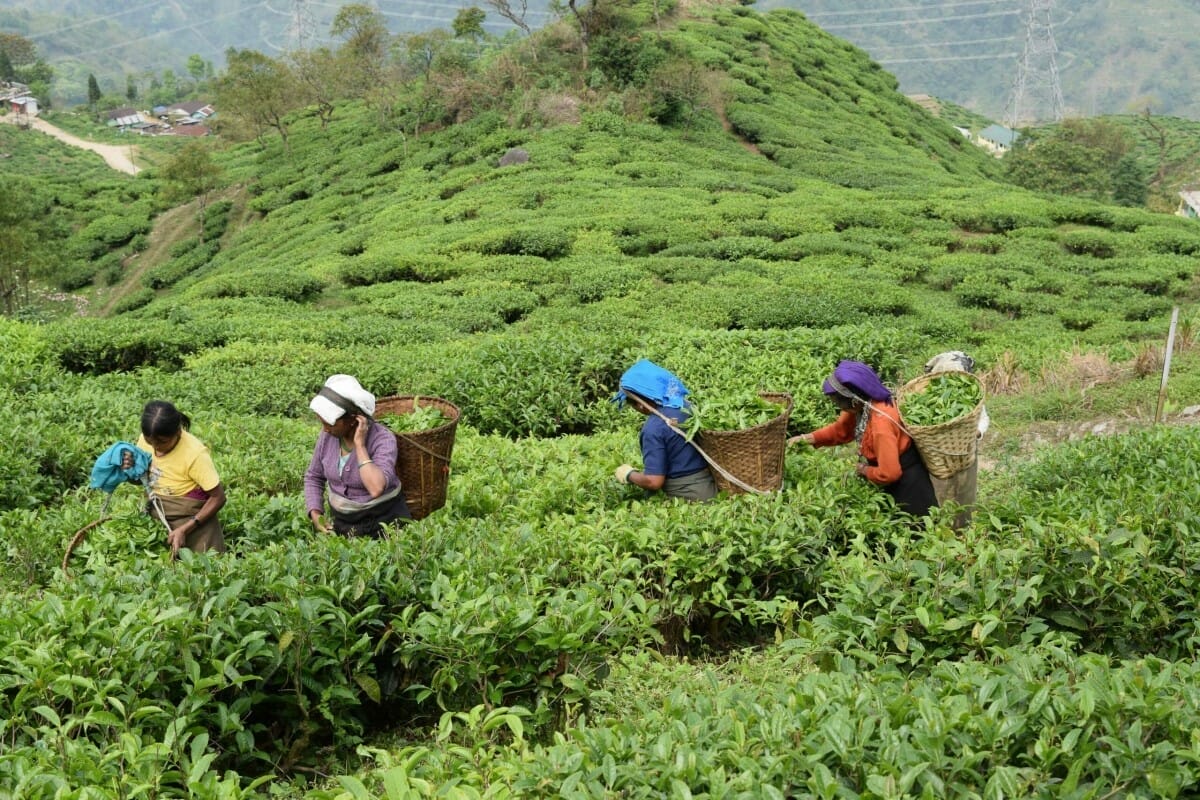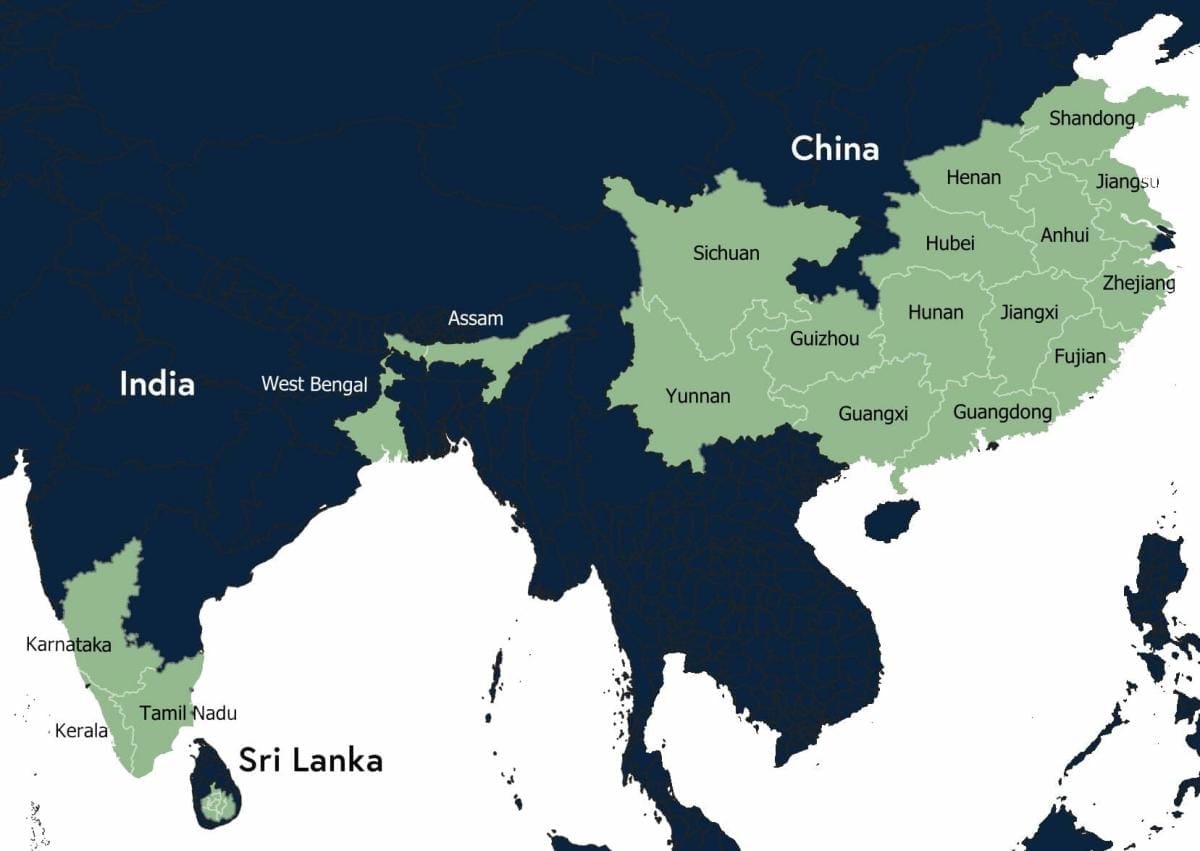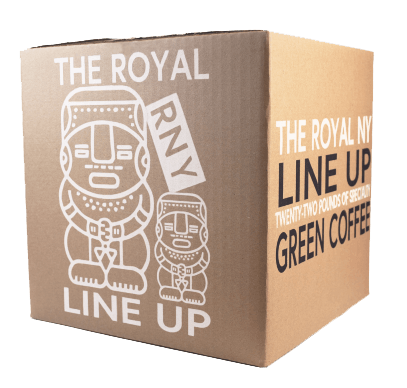No products in the cart.

Origin Profile: India
India produces mostly black tea using the Crush, Tear, Curl processing method ideal for filling tea bags and creating a bold and brisk tea, perfect for Chai.
| Total Production | 1.3 Million Tons |
| Approximate Breakdown by Type | 99% Black Tea:
CTC: ~90% Orthodox: ~10% |
| Common Varieties | >200 clones or cultivars developed from propagation, hybridization, and field selections |
| Assam | Assam in the single largest tea producing region in the world at about 50% of the country’s total production. Here, most of the production is using the CTC method which crushes and tears the tea into small pellets resulting in a dark and intense brew perfect for tea bags or in blends like chai. Orthodox, or whole leaf, teas are still produced. They are malty with less astringency than their CTC counterparts |
| West Bengal | 25% of the tea in India comes from this region, as well as its most prized: Darjeeling. Darjeeling tea is produced using the Camelia sinensis sinensis subspecies at high elevations creating a sweeter and lightly fruity flavor profile. |
| Tamil Nandu, Kerala, Kernataka | The remaining 25% of tea produced in India comes from these southern regions. A noteable tea produced here is Nilgiri. It is malty and sweet with some briskness. Majority of this region also produces tea using the CTC method. |

Tea production in India was started in order to reduce Britain’s dependence on Chinese tea. They opened tea plantations in the Assam region of India using the indigenous Camellia sinensis assamica subspecies, but the quality was distinctly different from what the british people were accustomed to from China.
Robert Fortune was enlisted to smuggle Chinese tea seeds and plants to the British colony in India. He is responsible for the success the Camellia sinensis sinensis subspecies has had in the Darjeeling region. Today, almost 70% of tea produces in India is consumed domestically, and they are responsible for creating a drink that has become a staple in cafes around the world: Chai. Chai is a blend of tea, and spices typically served with milk. Originally, the tea was an expensive luxury, so average consumers would add milk, sugar, and spices as to cut down on the cost. This beverage would become even more popular nearing the end of the 20th century with the invention of CTC or Crush, Tear, Curl processing. CTC processing increased the intensity and briskness of the tea, while also making it more affordable.
Recently, India has focused extensively on new cultivar development at its tea research institutions. There are well over 200 cultivars that have been developed to help increase the profitability of India’s tea estates which operate on razor thin margins.
Robert Fortune was enlisted to smuggle Chinese tea seeds and plants to the British colony in India. He is responsible for the success the Camellia sinensis sinensis subspecies has had in the Darjeeling region. Today, almost 70% of tea produces in India is consumed domestically, and they are responsible for creating a drink that has become a staple in cafes around the world: Chai. Chai is a blend of tea, and spices typically served with milk. Originally, the tea was an expensive luxury, so average consumers would add milk, sugar, and spices as to cut down on the cost. This beverage would become even more popular nearing the end of the 20th century with the invention of CTC or Crush, Tear, Curl processing. CTC processing increased the intensity and briskness of the tea, while also making it more affordable.
Recently, India has focused extensively on new cultivar development at its tea research institutions. There are well over 200 cultivars that have been developed to help increase the profitability of India’s tea estates which operate on razor thin margins.



